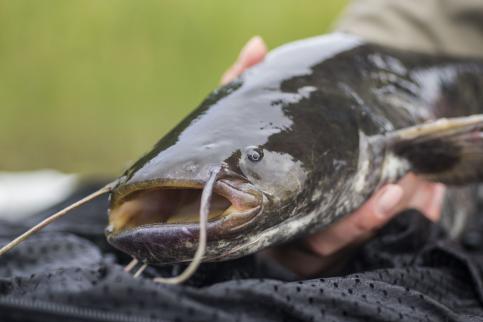Background & Aims
Background

Wels catfish has been declining in Northern Europe. The driving forces behind the decline is unclear, but a limiting factor is believed to be the cold climate; cold water temperature impacts the growth rate and sexual maturation of the species, likely causing the Swedish population to grow slower and reach sexual maturation later than other populations. Anthropogenic impacts such as lake lowering and hydropower construction has also been mentioned as culprits for the substantial decline during the last century, resulting in only three naturally occurring populations remaining in Sweden.
As most knowledge on wels catfish comes from studies on central European populations, there is a lack of knowledge on even basic behavioral characteristics of the Swedish population, such as how it has adapted to survive in cold climate, habitat use and activity patterns. It has thus proven difficult to establish a conservation strategy in Sweden.
Long-term, high resolution tracking data in combination with habitat covariates can be used to identify behavioural characteristics and habitat preferences, providing essential knowledge for the long-term conservation of the species.
Aims
Lately, there has been much development in fish telemetry, techniques used to track the movements and behaviour of fish. I used acoustic telemetry to obtain high resolution tracking data, with the purpose of exploring:
- If wels catfish has preferences for depth or hardness of the lakebed.
- Daily and seasonal variations in activity patterns and habitat preferences.
- Seasonal variation in site fidelity and home ranges.
Responsible for this page:
Director of undergraduate studies Biology
Last updated:
05/13/21
